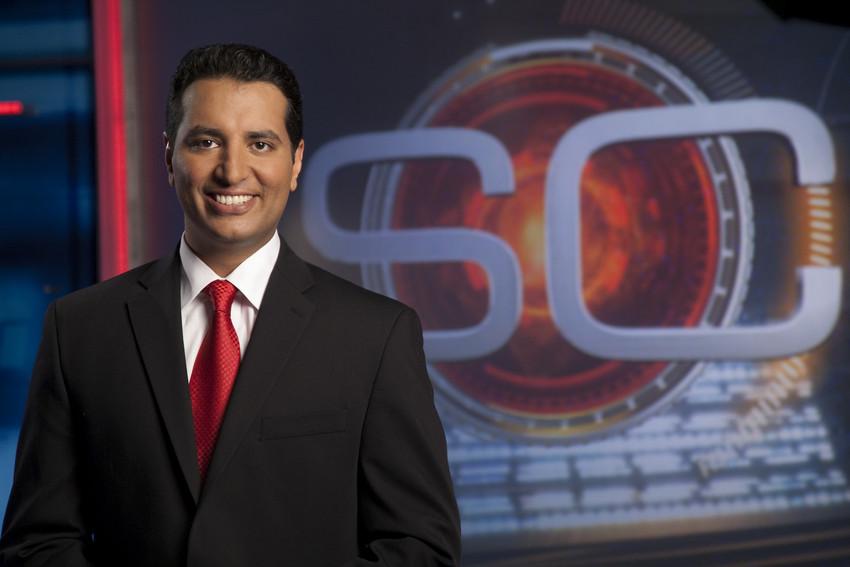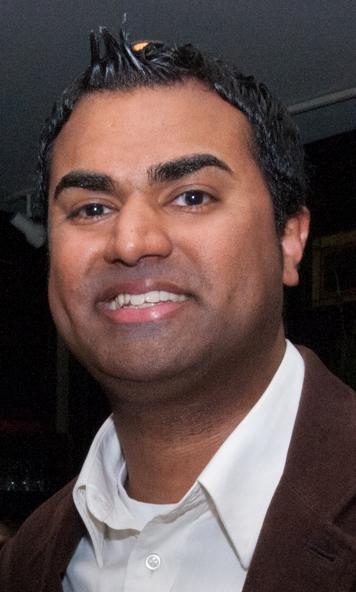This week, as I watched the season finales for New Girl, The Mindy Project and The Big Bang Theory, and followed the roll-out of the networks' new fall season schedules, I was reminded of a conversation I had with some friends in 1999.
“I never see anyone who reflects me,” I said. “Come on, these Friends live in New York and there are no Indians around them? These E.R. doctors work in a hospital and have no Indian colleagues?”
One of my friends responded with a grin: “There’s an Indian on TV: Apu!” He was referring to a character on The Simpsons, voiced by Caucasian actor Hank Azaria.
A wave of depression washed over me. My entire ethnic group was being represented on mainstream network television with one character — a cartoon character. Thankfully, things have changed — however slowly — over the past decade and a half.
Americans of Indian decent make up about 3.18 million or roughly one percent of the U.S. population. There is a whole generation of younger South Asian Americans who were born and have grown up in the U.S. And as the population has grown, we’ve seen South Asian actors appear on shows such as Glee, Parks and Recreation, The Good Wife, The Big Bang Theory and even Sesame Street.
She points to
The Big Bang Theory's Rajesh Koothrappali, played by Kunal Nayyar, and Pakistani American actor Iqbal Theba's Principal Figgins (right) on
Glee.
“A lot of the shows with Indian Americans are comedies," says Davé. "For a lot of people what’s funny is hearing that accent. It’s a part of this post-racial world — if you’re not going to talk about race, how do you show it in different ways? The idea of an accent is something associated with being Indian.“
Conforming to stereotype, Davé adds, makes the men more appealing and less threatening to non-Indian audiences, Consider Koothrappali on The Big Bang Theory. The character is a physicist and son of a wealthy doctor, and is unable to speak to women unless he’s drunk. His ethnicity is often used as a catalyst for humor. In one episode, his friend Sheldon describes him as “the loveable foreigner who struggles to understand our ways and fails.”
An argument could be made that Koothrappali is a stereotype in a show with many stereotypes. Given that, Nayyar does a great job portraying his character as the outsider who fits in very well with his circle of scientist friends. (
The Big Bang Theory's showrunners reportedly intended Koothrappali's character to be American-born, but that plan changed when British actor Nayyar (right, with co-star
Kaley Cuoco) auditioned for the part.)
While a thick Indian accent is a used as a comic device for men, Davé says it’s not the same for women. “It’s almost as if the holders of tradition are still the men,” she explains. Instead, Davé says, Indian and Indian American women on TV are often portrayed as exotic and desirable. "Indian women ... are seen as smart and sexually intriguing," she says. "This is in contrast to the men, who are knowledgeable but not necessarily desirable."
Davé uses the examples of Archie Panjabi in The Good Wife, Reshma Shetty in Royal Pains, Hannah Simone in New Girl and reality television star Padma Lakshmi of Top Chef.
“A lot of people talk about how beautiful and exotic [Lakshmi (left, with fellow Top Chef judge Tom Colicchio] is, but not about how knowledgeable she is,” says Davé. “There are gender politics at play here. [Indian] women are beautiful and men are knowledgeable.”
Both Lakshmi and Simone are former models. Like most of the Indian actresses and personalities on TV they are slim, with long dark hair and flawless style. Only recently have we seen the emergence of an actress who's the antithesis to this stereotype: Mindy Kaling.
First as Kelly Kapoor on NBC's The Office, and now as the star of her own Fox series, The Mindy Project, Kaling quickly broke the stereotype of the Indian woman as a flawless exotic beauty to comic effect.
When Kaling was given the opportunity to produce and star in her own television series, she received a lot of attention from the South-Asian community. “As an Indian American woman, I can’t stress enough how significant it is that Kaling is the only Indian American lead on television and the first Indian American female lead ever. It’s a huge deal and earns Mindy a spot in television history,” wrote Kayla Upadhyaya, managing arts editor of The Michigan Daily, shortly after the show debuted.
Yet, Davé says, The Mindy Project so far has done little to address Mindy’s ethnicity. Kaling (right) has given viewers a few glimpses into her character’s background when introducing her brother, or casually mentioning that her parents once sent her to a Jewish camp, but hasn’t gone any deeper.
“She’s working with two issues, gender politics and racial politics," says Davé, "and she seems to have really focused on gender.” Davé wonders whether Kaling went the gender route to satisfy the network and not alienate a general audience.
Kaling herself has said, "There's a saying that I really believe in when it comes to my Indianness: 'I try not to rely on it nor deny it.'"
Fox has renewed The Mindy Project for a second season, and Davé says this gives Kaling the opportunity to delve into her character's ethnicity.
Davé points to
New Girl as the example of the liberties a second season can bring, particularly when it comes to addressing subjects such as race. Early in season two of the Fox series, Hannah Simone's Cece character reveals her plan to take part in an arranged marriage with an Indian man. Throughout the season viewers see her meet various eligible bachelors and even attend an Indian marriage convention. She finally meets and becomes engaged to her fiance Shivrang (Satya Bhabha, pictured at left with series star Zooey Deschanel, guest Ajay Mehta and Hannah Simone).
Davé praises New Girl for its commitment to incorporating diversity into the show's storylines. "I think this show is a response to the criticisms leveled at Friends, or talked about with shows like How I Met Your Mother, because it wants to include a diverse population and also brings in different characters," says Davé. “[There's a] constant use of 'brown' and 'black' and being part of your community," she says. "It's what is missing in The Mindy Project ... but since her show is still young I have hope she can complicate the characters and situations.”

The increasing visibility of South Asian Americans extends beyond network comedy and drama to news programs. A number of news shows and networks prominently feature Indian journalists. CNN has Dr. Sanjay Gupta and Fareed Zakaria, host of Fareed Zakaria, GPS; PBS NewsHour has correspondent Hari Sreenivasan; FOX News has senior news anchor Uma Pemmaraju; ESPN's SportsCenter features anchor Kevin Negandhi (right); and MSNBC’s Martin Bashir (formerly of ABC’s Nightline) hosts his own show weekday afternoons. Start-up cable network Al Jazeera America has hired Ali Velshi, who was until recently CNN’s chief business correspondent, to host its planned business program. The new network, which launches in mid- to late summer and will replace Current TV, will most likely hire more South Asian and Middle Eastern journalists in the coming months.

Sovy Azhath (right), the president of the South Asian Journalists Association and a producer with CNN, says younger Indians are helping to foster the diversity that's being seen on television news. “A lot of Indians are going into journalism, whereas before they were going into medicine. They are doing what they want to do. I feel there’s a shift because they want to follow their passion.”
Azhath believes there are still challenges to face as far as viewer stereotypes. “My goal and dream is to have mainstream society look at an Indian on TV and say, 'that’s a good anchor, he knows his stuff ... he’s smart, talented and hard-working like any other American.' We still have a lot of work to do,” he says. “We’re pioneers. We’re making it easier for next generation.”
Some of TV’s Indian “pioneers” will be part of the exhibit Beyond Bollywood: Indian Americans Shape the Nation, which opens at the National Museum of Natural History in Washington, DC, in December. It will include portraits of Mindy Kaling, Kal Penn, Kunal Nayyar and, yes, even Apu Nahasapeemapetilon, who will most certainly be a part of the upcoming 25th season of The Simpsons. This exhibit is part of the Smithsonian’s Indian American Heritage Project, which aims to chronicle the experience of immigrants from India and Indian Americans in the U.S.
Its curator, Dr. Masum Momaya (right) credits television as the medium through which the general American public has gotten to know the South Asian community.
“I think in last decade we’ve seen an evolution,” says Momaya, “but Indians are still cast based on stereotypes, in occupations such as doctors, scientists or engineers, or in some cases in cameos as taxi drivers or convenience store owners. So while there’s evolution, we still have quite a ways to go.”
Momaya believes independent films have done more than television to break the stereotypes. “[Films] explore things in a more nuanced way, and are not under pressure to cater to main stream audiences in the way TV is,” she says. “That’s what allows them to push beyond the stereotype to what it means to be a Indian person living in America, a person of color living in America, and immigrant living in America.”
Davé (right) sees signs that television is starting to break free of long-standing Indian stereotypes. She points to Aziz Ansari (left, with Amy Poehler), who plays Tom Haverford on Parks and Recreation, Kal Penn, who portrayed Lawrence Kutner on House (and now stars in the upcoming CBS ensemble comedy We Are Men with Lebanese American actor Tony Shalhoub) and Aasif Mandvi of The Daily Show as part of a new TV generation.
"I would like to see more Indian actors in leading dramatic roles (such as we saw in Lost and Heroes)," she adds. And that, too, is happening. In addition to Penn's We Are Men, a CBS comedy about four single guys living in an apartment complex and bonding over love relationship issues, the upcoming TV season will feature Summer Bishil as part of ABC's ensemble drama series, Lucky 7, and Annet Mahendru — who had a recurring role as Russian agent Nina on FX’s critical hit, The Americans, this season — will be a series regular for the show's second season.
Davé says it’s up to a new generation of Indian American scriptwriters to explore and honestly portray Indian American culture. "This is a time when taking chances could pay off.”